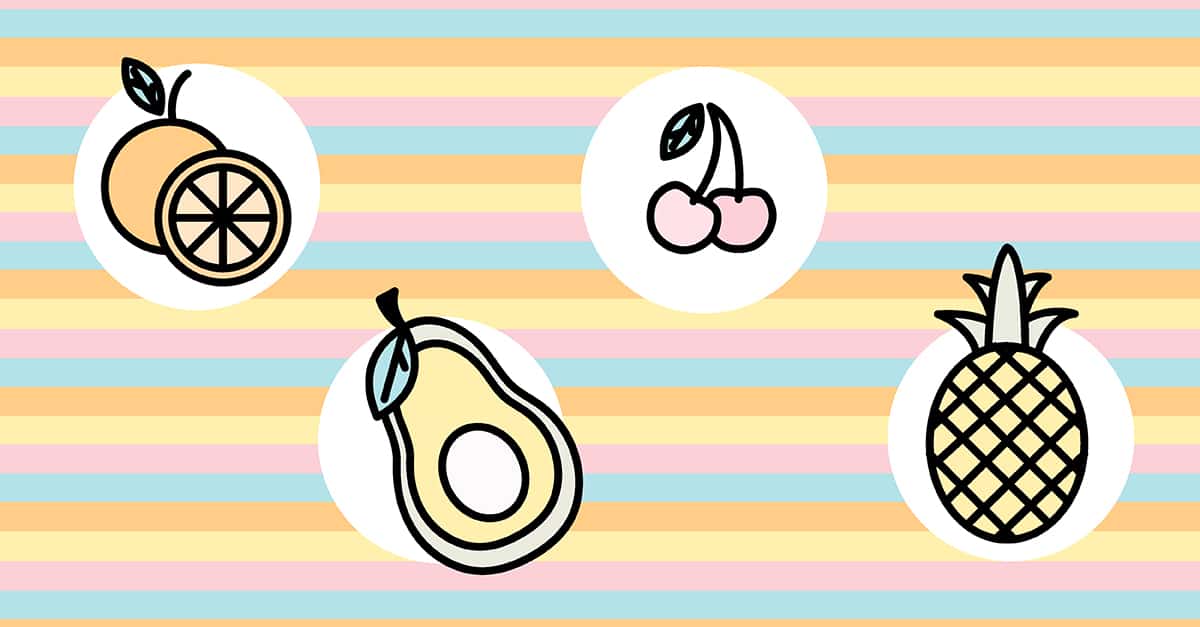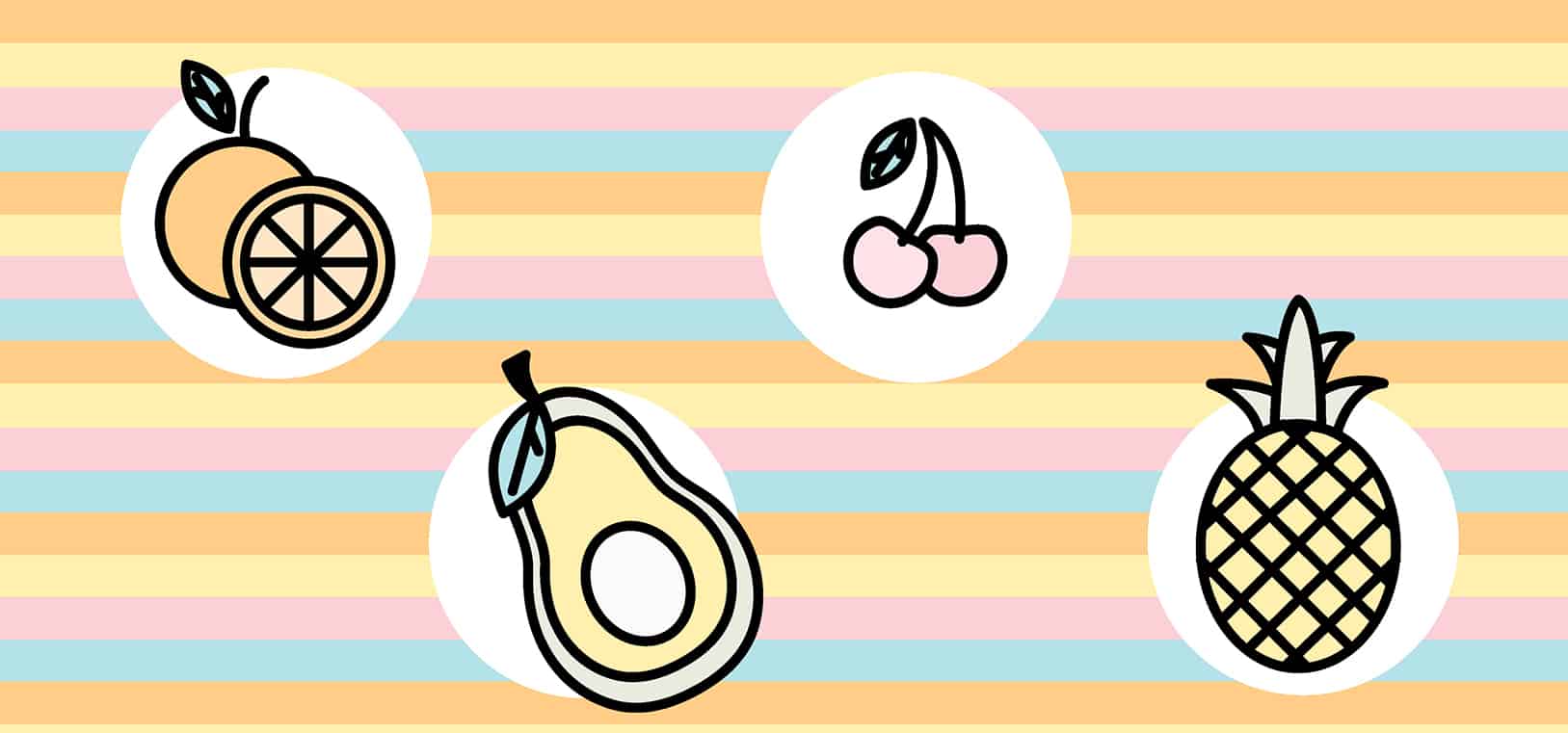When you picture a healthy diet, what do you see? Lots of salads, maybe some smoothies, a little steamed broccoli? It’s easy to guess what you’re not envisioning, though, and that’s sugar. Cookies, cakes, and ice cream are sweetly seductive, but what about naturally sweet eats? Sugar occurs naturally in many foods, including fruit. In fact, because fruit is naturally higher in sugar than, say, vegetables, some popular eating plans (such as Atkins, Paleo, and Keto) strictly limit fruit intake, at least for a period of time.
However, fruit is packed with good stuff that many of us don’t get enough of including potassium, fiber, vitamin C, and folate. The nutrients and phytonutrients in fruit are vital for a healthy body and strong immune system, not to mention the fact that fruit is a tremendous source of energy.
So, is fruit a friend or a foe? Let’s bite into this tasty topic.
Should anyone cut fruit out completely?
The simple answer is no, says Whitney English Tabaie, a registered dietitian nutritionist who encourages what she calls a predominantly plant-based nutrition philosophy. “Fruit is full of health-promoting components, like phytochemicals, which reduce inflammation and may prevent disease, and fiber, which helps provide satiety after meals, improves digestion, promotes a healthy gut environment, controls blood sugar, and helps prevents chronic diseases like cancer,” she says.
Researchers agree. “While studies do show diets high in added sugar are associated with higher rates of chronic disease, there are absolutely no studies showing that whole fruit consumption contributes to weight gain or health problems,” Tabaie says. It’s actually the opposite: Research shows eating fruit and veggies increases weight loss results.
Does the body differentiate between types of sugar?
Yes and no. All sugar, whether in a packet or piece of fruit, is a simple carbohydrate that our bodies break down for energy. But fruit also has antioxidants, vitamins, minerals, and the aforementioned disease-fighting nutrients and phytonutrients. Just as importantly, fruit provides fiber, which slows down the absorption of sugar in the bloodstream.
In contrast, refined sugar or items made solely of table sugar—such as soda and candy—has no fiber or nutritional value. Because there’s nothing there to slow your absorption of sugar, your bloodstream absorbs the sugar quickly (aka a sugar high), at which point your body releases a surge of insulin to remove the sugar from the blood to your tissues (aka a crash). This doesn’t only affect your energy levels, but also leads to a cycle of cravings.
No wonder snacking on some strawberries doesn’t have quite the same effect as knocking back a few Pixie Stix.
Are all fruits equally healthy?
You might be familiar with the phrase “eat the rainbow,” which refers to the idea of eating fruits and veggies in a variety of colors each day. Tabaie encourages her clients to do just that. “Different colors mean [the fruits] have different phytochemicals,” she says. “Red fruit—for example, tomatoes, watermelon, and papayas—contain lycopene, an important cancer-fighting phytochemical. Dark blue and purple fruits such as blueberries, grapes, and cherries contain anthocyanins, phytochemicals which may help prevent cardiovascular disease and boost cognitive function.”
Tabaie doesn’t view different fruits as better or worse. They all have benefits. However, it’s worth noting that different types of fruit have varying amounts of sugar, so while you don’t need to avoid fruit like the plague, anyone looking to fine-tune their nutrition might want to be mindful of which fruits have the most sugar.
Is there such a thing as too much?
The general guideline is to consume two to three servings of fruit per day, which is equivalent to about ½ cup or one small piece of fruit. More than that may mean you’re eating too much sugar, which puts you at increased risk of weight gain, cardiovascular disease, and diabetes.
If you enjoy a daily smoothie, you may hit that natural sugar threshold without realizing it. But don’t drop your smoothie habit just yet; after all, it’s an easy way to eat that rainbow. Instead consider using a smaller amount of fruit and add in veggies, such as beets or leafy greens.
You might also try pairing your fruit with healthy fat or protein to increase satiety, Tabaie says. For instance, she adds berries to her oatmeal and eats a banana with peanut butter or a handful of nuts. “Fat helps absorb fat-soluble vitamins in the fruit,” she explains, “and protein can help with fullness so you don’t feel hungry too shortly after your meal or snack.”
Conclusion
The bottom line? Fruit brings enough goodness to the table that it’s worth the sugar content; just be mindful of how much you eat each day.


